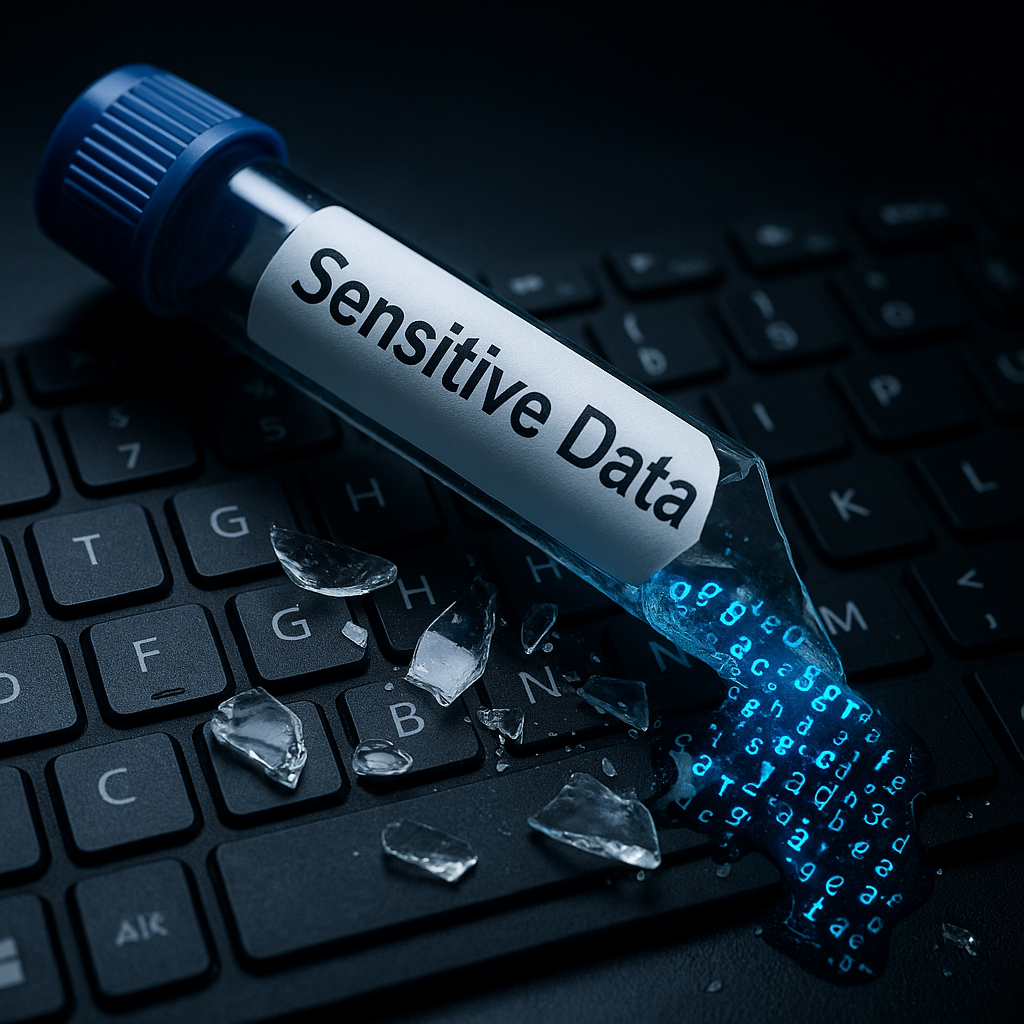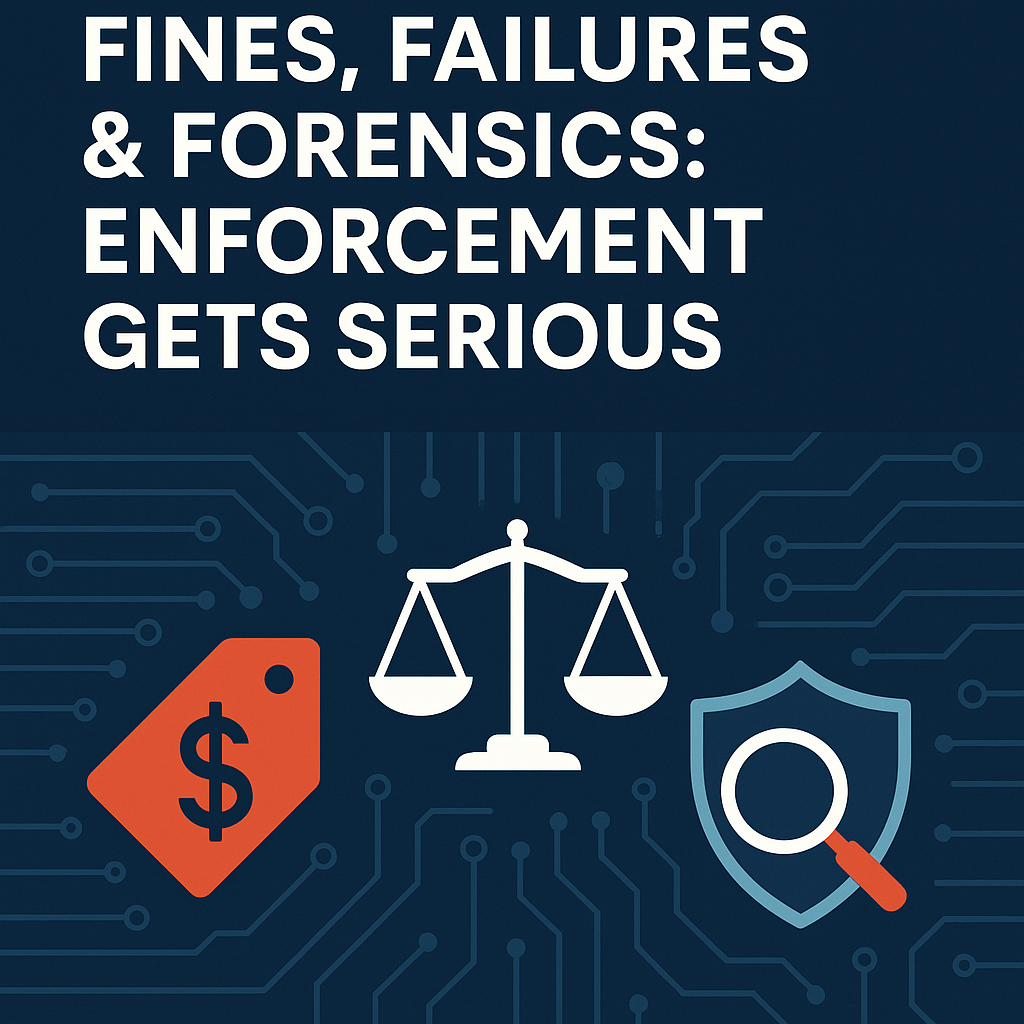Privacy’s First Big Hit: Australian Clinical Labs Fined $5.8 Million for Data Breach Failures
 When 86 gigabytes of patient data — including health, financial and identity information — hit the dark web after a ransomware attack, the fallout was always going to be brutal.
When 86 gigabytes of patient data — including health, financial and identity information — hit the dark web after a ransomware attack, the fallout was always going to be brutal.
Now, in Australian Information Commissioner v Australian Clinical Labs Limited (No 2) [2025] FCA 1224, the Federal Court has handed down a $5.8 million penalty — marking the first civil penalty judgment under the Privacy Act.
And it’s a warning shot for every business holding personal information in Australia.
⚖️ The Case in a Nutshell
Australian Clinical Labs (ACL) — one of the country’s largest private pathology providers — bought Medlab Pathology in late 2021.
What it didn’t buy (or even check properly) were Medlab’s crumbling IT systems: unsupported Windows servers, weak authentication, no encryption, and logs that deleted themselves every hour.
In February 2022, the inevitable happened — a ransomware group calling itself “Quantum” infiltrated Medlab’s servers, exfiltrated 86GB of data, and dumped it online.
ACL’s response was painfully slow. Despite early signs of exfiltration, it:
-
Relied almost entirely on an external consultant’s limited review;
-
Concluded (wrongly) that no data had been stolen;
-
Ignored early warnings from the Australian Cyber Security Centre; and
-
Waited over three months before notifying the OAIC.
🧩 The Breaches
Justice Halley found ACL had seriously interfered with the privacy of 223,000 individuals through three major contraventions of the Privacy Act 1988 (Cth):
-
Breach of APP 11.1 — Failure to take reasonable steps to protect personal information from unauthorised access or disclosure.
-
The Medlab systems were riddled with vulnerabilities.
-
ACL failed to identify or patch them after acquisition.
-
Overreliance on third-party providers compounded the problem.
-
-
Breach of s 26WH(2) — Failure to carry out a reasonable and expeditious assessment of whether the incident was an eligible data breach.
-
ACL’s “assessment” was based on incomplete data and unsupported assumptions.
-
The Court called it unreasonable and inadequate.
-
-
Breach of s 26WK(2) — Failure to notify the Commissioner as soon as practicable after forming the belief that an eligible data breach had occurred.
-
ACL delayed nearly a month after confirmation that personal and financial information was on the dark web.
-
Each breach amounted to a “serious interference with privacy” under s 13G, attracting civil penalties.
💰 The Penalty Breakdown
ACL agreed to pay a total of $5.8 million:
| Contravention | Section | Penalty |
|---|---|---|
| Breach of APP 11.1 (223,000 contraventions, treated as one course of conduct) | s 13G(a) | $4.2 million |
| Failure to assess breach | s 26WH(2) | $800,000 |
| Failure to notify OAIC | s 26WK(2) | $800,000 |
| Total | $5.8 million |
ACL also agreed to pay $400,000 in costs.
While the theoretical maximum exceeded $495 billion, the Court accepted the agreed penalty as being within the permissible range — particularly given ACL’s cooperation, remorse, and post-breach reforms.
⚙️ “Reasonable Steps” — The New Legal Standard
This judgment finally gives judicial colour to APP 11.1’s “reasonable steps” requirement.
Justice Halley said reasonableness must be assessed objectively, considering:
-
the sensitivity of the information;
-
the potential harm from unauthorised disclosure;
-
the size and sophistication of the entity;
-
the cyber risk landscape; and
-
any prior threats or attacks.
Critically, “reasonable steps” cannot be outsourced — delegation to an IT vendor does not discharge responsibility. ACL’s overreliance on StickmanCyber was no defence.
🚨 Why It Matters
This decision rewrites the playbook for privacy compliance in Australia:
-
Civil penalties are real — the OAIC now has judicial precedent for enforcement.
-
Each affected individual counts — the Court held that each person’s privacy breach is a separate contravention.
-
“Serious” breaches will be taken seriously — health and financial data, inadequate security, and systemic failures will all tip the scales.
-
M&A due diligence must cover cybersecurity — buying a business means inheriting its data liabilities.
-
Notification delays will cost you — the OAIC expects “as soon as practicable,” not weeks or months.
💡 IP Mojo Take
Privacy can’t be treated anymore like it is just a paperwork exercise — it’s a governance test you can fail in the Federal Court.
This case cements privacy law as a compliance discipline with teeth.
The OAIC now has a roadmap for future actions — and the Court has made clear that “reasonable steps” means measurable, auditable, and proactive security governance.
For corporate Australia, this is ASIC v RI Advice for the health sector — but under the Privacy Act instead of the Corporations Act.
Expect to see:
-
Increased OAIC enforcement in healthcare, finance, and tech sectors;
-
Board-level scrutiny of data protection measures; and
-
Class actions waiting in the wings, armed with a judicial finding of “serious interference with privacy.”
The privacy bar has just been raised — permanently.
 The Federal Court has handed down its first civil penalty judgment under the Online Safety Act 2021 (Cth), in eSafety Commissioner v Rotondo (No 4) [2025] FCA 1191.
The Federal Court has handed down its first civil penalty judgment under the Online Safety Act 2021 (Cth), in eSafety Commissioner v Rotondo (No 4) [2025] FCA 1191. This July marks a pivotal moment for Queensland public sector entities, agencies, and their contractors. The Information Privacy and Other Legislation Amendment (IPOLA) Act 2023 comes into full effect from 1 July 2025, ushering in sweeping updates to Queensland’s Information Privacy Act 2009, Right to Information Act 2009, and the rules governing data-breach notifications.
This July marks a pivotal moment for Queensland public sector entities, agencies, and their contractors. The Information Privacy and Other Legislation Amendment (IPOLA) Act 2023 comes into full effect from 1 July 2025, ushering in sweeping updates to Queensland’s Information Privacy Act 2009, Right to Information Act 2009, and the rules governing data-breach notifications.  You could be forgiven for thinking Australia’s privacy law just had its big moment — and it did. But don’t get too comfortable. What we’ve seen so far from the December 2024 amendments to the Privacy Act 1988 (Cth) is just Round 1.
You could be forgiven for thinking Australia’s privacy law just had its big moment — and it did. But don’t get too comfortable. What we’ve seen so far from the December 2024 amendments to the Privacy Act 1988 (Cth) is just Round 1. Automated decision-making is everywhere now — in the background of your credit check, your insurance quote, your job application, even the price you see for a pair of shoes. For a while, this opaque machine logic operated in a legal blind spot: useful, profitable, and often inscrutable. But no longer.
Automated decision-making is everywhere now — in the background of your credit check, your insurance quote, your job application, even the price you see for a pair of shoes. For a while, this opaque machine logic operated in a legal blind spot: useful, profitable, and often inscrutable. But no longer. For many years, privacy enforcement in Australia was a bit… polite. The OAIC could nudge, issue determinations, and make a bit of noise, but it often lacked the real teeth needed to drive compliance in the boardroom. That era is over.
For many years, privacy enforcement in Australia was a bit… polite. The OAIC could nudge, issue determinations, and make a bit of noise, but it often lacked the real teeth needed to drive compliance in the boardroom. That era is over.